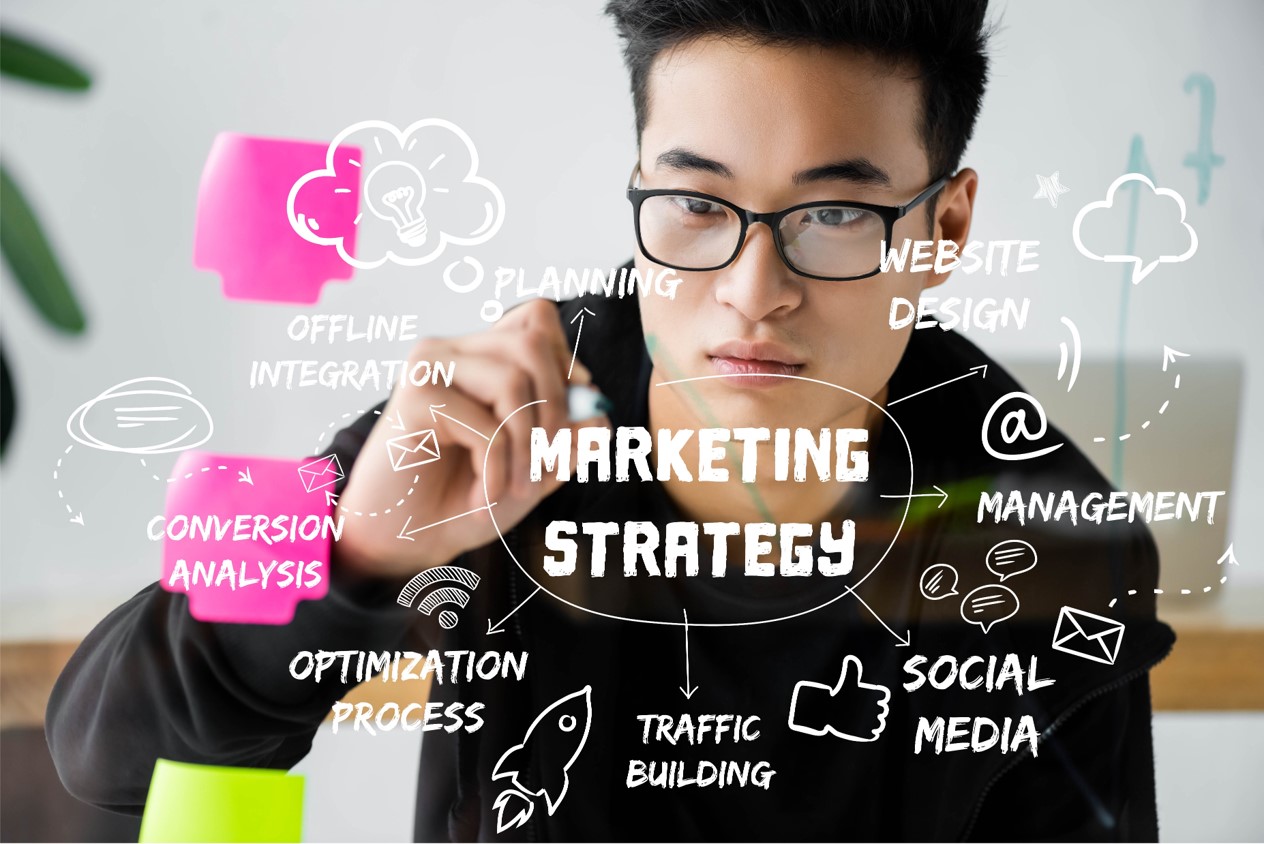By: Jeanine Moss and Nicole DeMeo
Topic Intelligence AI Data gives you the brand specific topics and keywords to invest in before spending on content and campaigns
Before AI-driven Topic Intelligence™ data was available, marketers had little to inform them about the topics and contextually related keywords their brand should invest in before deploying content and campaigns. By leveraging AI-driven topic and keyword data to connect with intent, online visibility and engagement is increased along with meaningful results and ROI. This data-driven approach to contextual content marketing drives more traffic, increases sales and improves brand visibility. This article explores how AI-driven Topic Intelligence™ and keyword data should be used in combination to capitalize on intent for improved goal conversion.
Savvy marketers know that a customer’s “intent to buy” trumps demographic targeting every day of the week – particularly in B2B marketing. Even if cookies weren’t phasing out, targeting topics instead of people reveals purchase intent that is far more powerful than age, income and zip codes. But you know that. That’s why you use SEM (search engine marketing), incorporating keywords and content marketing.
Buying keywords makes perfect sense until you consider the red ocean of competition Google has created. Consider buying the word “bank.” It can be associated with a food bank, blood bank, West Bank, or any number of permutations. If you’re a genius with time on your hands you can think of all the exclusions, but you’ll still end up buying too many keywords and adjacencies – driving up the costs of SEO (search engine optimization).
Thanks to AI-Driven Topic Intelligence™ Data you can stop overpaying for highly contested keywords and making Google rich. Their pricing is based on historical data combined with how much they think they can get advertisers to pay. They control the arbitrage, and they make bank (pardon the pun) while you try to stay afloat in their red ocean with its undifferentiated approach to keywords.
Stop overpaying for highly contested keywords and making Google rich.
AI-Driven Topics and Keywords are different. They’re contextual and pull people through a sales funnel in ways a simple collection of keywords can’t. Topics with contextualized keywords traverse silos and work across your organization from SEM to content like articles, social media and blog posts, thought leadership, videos, podcasts and more. They engage people who are demonstrating purchase intent.
Topic Intelligence™ (TI) is a proprietary AI technology that generates topic-based data to inform and optimize content marketing from branding to communications and advertising. It targets topics rather than people, delivering the right audience in a privacy compliant way, on the right channels, with a contextually relevant message to drive engagement.
The Difference Between Topic Data and Keyword Data
At first glance, topic and keyword data may seem similar. They’re not.
Keywords play a crucial role in SEO and PPC (Pay Per Click) campaigns by targeting searches conducted by audiences looking for relevant products and services. Advertisers bid on keywords so that their ad is at the top of search engine results. They’re pricey, their utility wanes over time, and they lack brand specificity.
Discover the strategic themes your brand can own that are differentiated, efficient and profitable.
AI-Driven Topic and Keyword Data by contrast, is a new data set that reveals strategic themes your brand can own and the keywords that are related to them. The data is brand-specific, differentiated, efficient, and profitable. AI-Driven Topics typically have hundreds of keywords associated with them, providing a greater depth of understanding and fodder for content development. “Clusters” of keywords – groupings of related topics and keywords – under a layer of AI-Topic Intelligence™ data provide insight into how customers think about a topic instead of marketers having to guess about it.
To illustrate, consider a wellness company that believes customers are searching for “longevity.” They create a campaign to draw visitors by writing about aging and food choices. Every wellness company is bidding for “longevity” as a keyword, so it’s expensive. But what if people are really thinking about brain health in connection with longevity or “life expectancy”? You could spend a fortune and not connect with the one topic that will elicit the greatest reaction.
Target Topics, Not People to Respect Privacy
Data is the super fuel of marketing performance. For the past 15 years marketers have tracked “people,” collecting their demographics, psychographics and behavioral data and applying them to the content, offers and promotions they serve visitors online. Consumers resent these privacy-violating “cookies” and governments are phasing them out globally.
Even if you want to stick with these methods and risk the ire of your customers, there are three major disadvantages of targeting people:
- Regulations are increasing costs, complications, and legal exposure.
- You might have the right demographic, but if they’re not in the market to buy, or have already purchased – you’re not going to make a sale.
- Keywords can misfire and threaten brand safety as illustrated in the example about the word “bank.” The net effect is higher waste, less cost-efficient conversion, and potential brand erosion.
Topic and keywords in combination lower costs, attract the right people, and highlight brand differentiation while being privacy compliant.
Targeting topics and contextual keywords lowers costs, attracts the right people, and your brand can more easily highlight its advantages and differentiation. Plus, it’s privacy compliant and you’re providing value to people, which increases brand loyalty and lifetime value.
The Power of Combining AI-Driven Topics and Keywords
Think of topics as the overarching theme of a collection of keywords. AI technology has the ability to find the themes and the underlying words that are contextually associated.
When you use AI-Driven Topic Intelligence™ data and keywords that are contextually aligned, amplify each other and offer creative ways to attract your customers with content. Topics and keywords work together because each data set delivers exceptionally well in different applications.
The topic and keyword data informs content across all marketing channels from articles to white papers, social media and email delivering superior results.
Using AI, we’re able to discover and rank the topics and keywords that will perform best in each channel – from SEO to PPC (Pay Per Click Advertising). The data informs content across all marketing channels from articles to white papers, social media and email delivering superior results. We refer to the ranking as a Topic Intelligence™ Score. This AI-driven ranking score predicts which topic and associated keywords will perform in driving outcomes. This 360° view of topics and keywords enables brands to optimize ROI before making investments.
Benefits of AI-driven Topics and Keywords:
Topic data provides upper funnel results (e.g. awareness and attraction), whereas keywords provide lower funnel results (e.g. details and offers). Together, the two datasets act as a unifier for everything from content to SEO and email.
- Topic data stimulates new creative content concepts, while keywords alone do not provide additional insights.
- Topic data themes provide insights into how to address new customer segments.
- Topic data cost-effectively informs a wide range of content such as videos and white papers while keywords are limited in context and application and can’t help a brand “own” a theme.
Media Buying: Topics v. Impressions
For the past 15 years, digital media buying was centered on “scale” – buying a large number of impressions or clicks. This model relied on a murky supply chain which presented significant challenges for a brand to know where ads ran (creating brand safety issues), and whether a click was a person or a bot. Channel attribution was a significant challenge.
The goal of media buying is investing in the topics and keywords with the highest potential to drive profitable outcomes. Buying media for content adjacency is easier, more accurate and cost-efficient than buying media impressions.
Buying media for content adjacency is more accurate and cost-efficient than buying media impressions.
Increasingly, marketers are focusing on content adjacency because they know when a person reads an article about something like “the 10 best computers” today, they probably are interested in buying a computer.
Here’s how to embrace a next-generation contextual media buying approach:
- Sponsored content delivers conversion rather than impressions. Rather than running banner ads with their high level of “banner blindness,” brands are shifting to sponsored content (written by the publisher and/ or the advertiser). Media buys are not measured by the scale of impressions but by how they perform in delivering results.
- PPC. This lower funnel media channel is productive if the keywords reflect what audiences care about. When associated with Topic Data, advertisers can bid on related keywords that may not be as costly.
- SEO. SEO involves optimizing website content, structure, and design to rank higher in search engine results pages (SERPs). The primary goal is to drive qualified organic traffic to a brand website by making it more visible and accessible in connection with a person’s search. A brand can have hundreds or even thousands of keywords. AI-driven topics organize these keywords into clusters for practical campaign management.
Five Ways to Implement AI-Driven Topic & Keyword Data
1. Content development. Topic data provides strategic level insight, while keywords increase the discoverability of content at a granular level. Together, topics and keywords drive actions throughout the marketing funnel.
2. Sales conversion campaigns. Topic data reveals customer pain points and offers more opportunities for personalization to increase sales conversion.
3. Branding programs. AI-driven Topic Data enables companies to develop messaging strategies aligned with consumer preferences, values, and interests. This creates a more authentic brand identity and drives customer loyalty.
4. PPC. A bedrock for many brands (advertisers only pay for actual clicks on their ads rather than impressions or views), PPC is when people’s search intent signal is correlated with keywords. The addition of AI-driven Topic data in PPC campaigns allows brands to appeal to customers while exploring topics that are not on their competitor’s radar. AI-driven Topic Intelligence supercharges PPC advertising.
5. SEO (Search Engine Optimization). From link-backs to the cadence of content, algorithms now focus more on content quality and volume, than meta tags and previous measures. Topics and keyword clusters provide the “juice” for data-driven content development across all customer touchpoints.
Conclusion
Before AI-driven Topic Intelligence Data was available, marketers had to guess about the topics and related keywords their brand should invest in. By leveraging AI-Driven Topic Intelligence™ and keyword data, online visibility and engagement is increased along with meaningful results and ROI.
__________________________________________________________________________
About the Author & Outfront Solutions
Jeanine Moss and Nicole DeMeo are the founders of Outfront Solutions, an innovative branding, marketing and MarTech implementation firm serving enterprises, middle-market companies and global NGOs. For more information, please visit: https://www.outfront.solutions/





